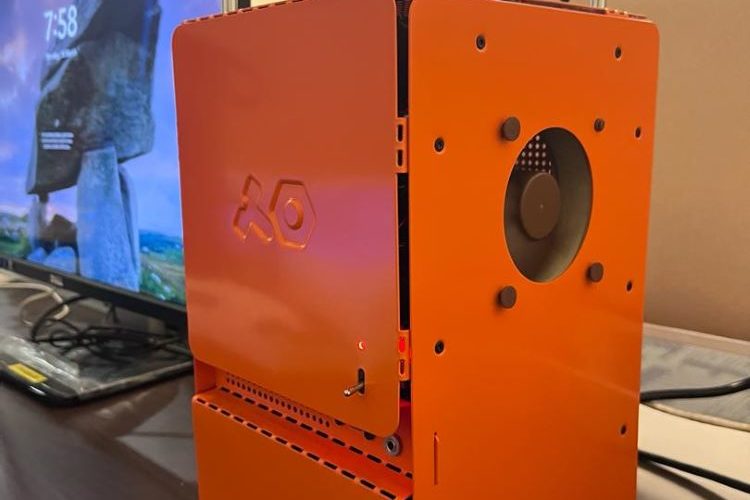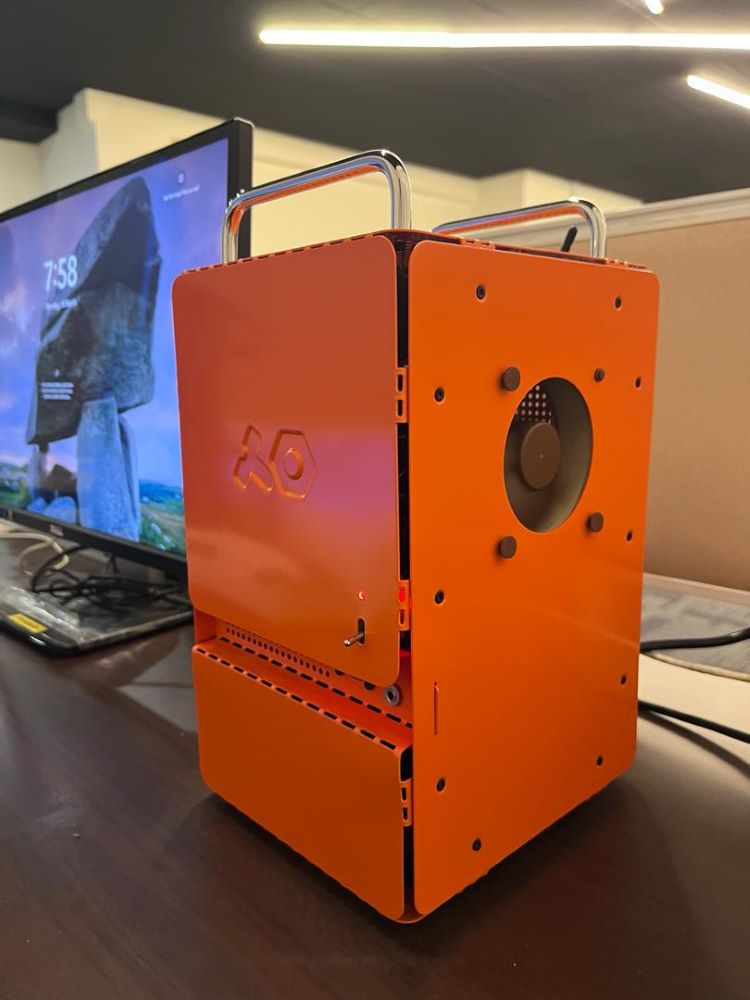
The Motherboard
For this year’s build, I to go with the AM5 platform. For those who’ve been reading my blog, you would know that I’m not a stranger to the platform, having reviewed a bunch of AMD chips last year. The motherboard that I’m using this time around is an ASRock A620I Lightning WiFi (Amazon – USD 139), which was priced around the same range as the Gigabyte A620I AX (Amazon – USD 129). Having worked with several different Gigabyte motherboards (including several review units), I thought it would be a change of pace to work with an ASRock one.
It comes with 1 PCIe 4.0 x16 slot for the GPU, two slots for DDR5 RAM , and 2 slots for NVMe drives. The IO ports at the back include 1 USB 3.2 Gen2 Type-C, 2 USB 3.2 Gen2 Type-A and 1 USB 3.2 Gen1 Type-A. The motherboard supports as well the Type-C port provided at the front of the Teenage Engineering case.
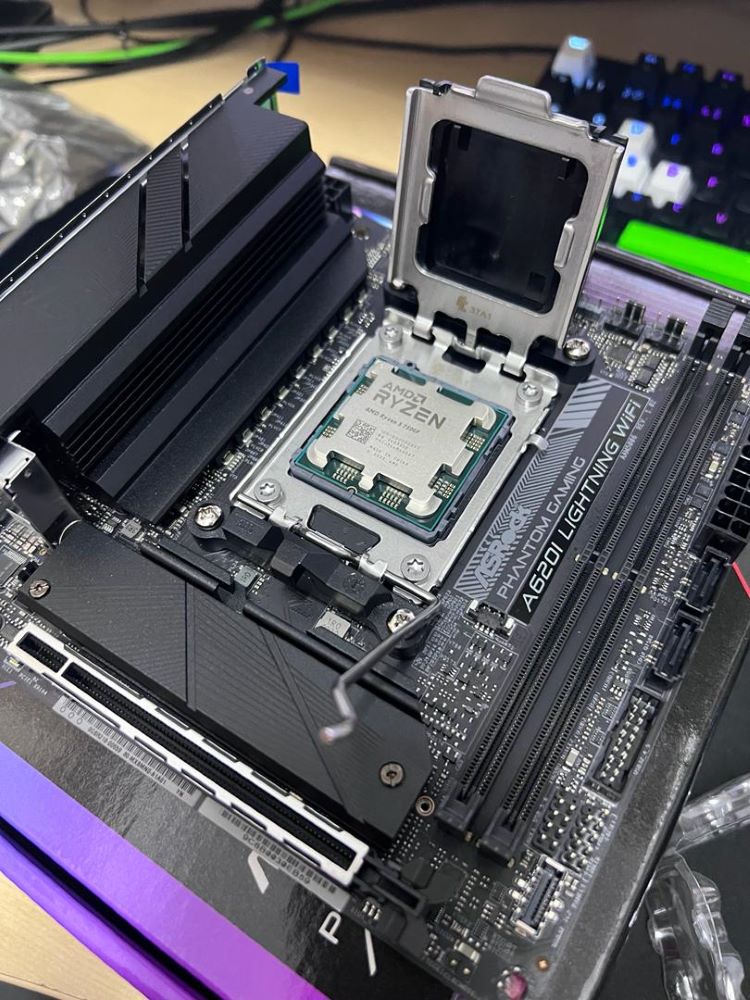
The CPU and GPU
The heart of this new build is AMD’s Ryzen 5 7500F. Online reviews have dubbed this OEM-oriented processor the 7600 without the integrated graphics and a very slight speed bump. To be honest, I just wanted something cheap and relatively powerful for the build and this processor fits the description. The new 8000-series processors have just hit the market but I don’t really need an iGPU.
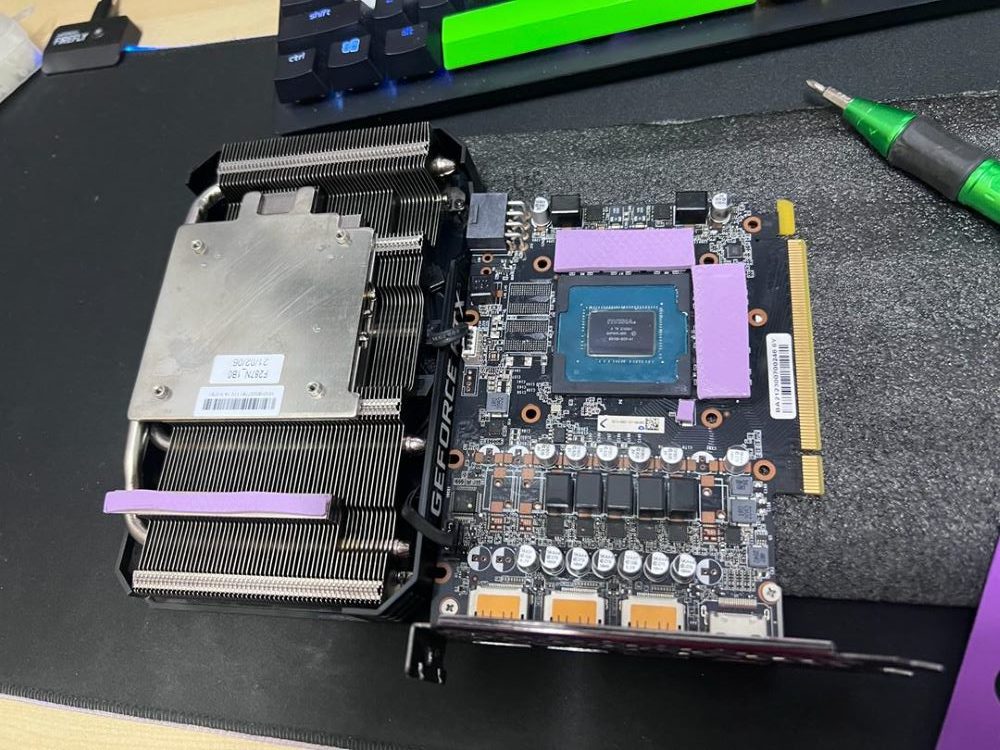
The GPU
The PNY GeForce RTX 3060 12GB XLR8 Single Fan GPU is such a rare bird and the funny thing was, I had taken it apart back in August 2023, and only replaced the thermal pads last weekend before adding it to Project 2024. The thermal pads that I used were from Cooler Master with different thickness levels for the capacitors (1.5 mm) and VRAM (2 mm).
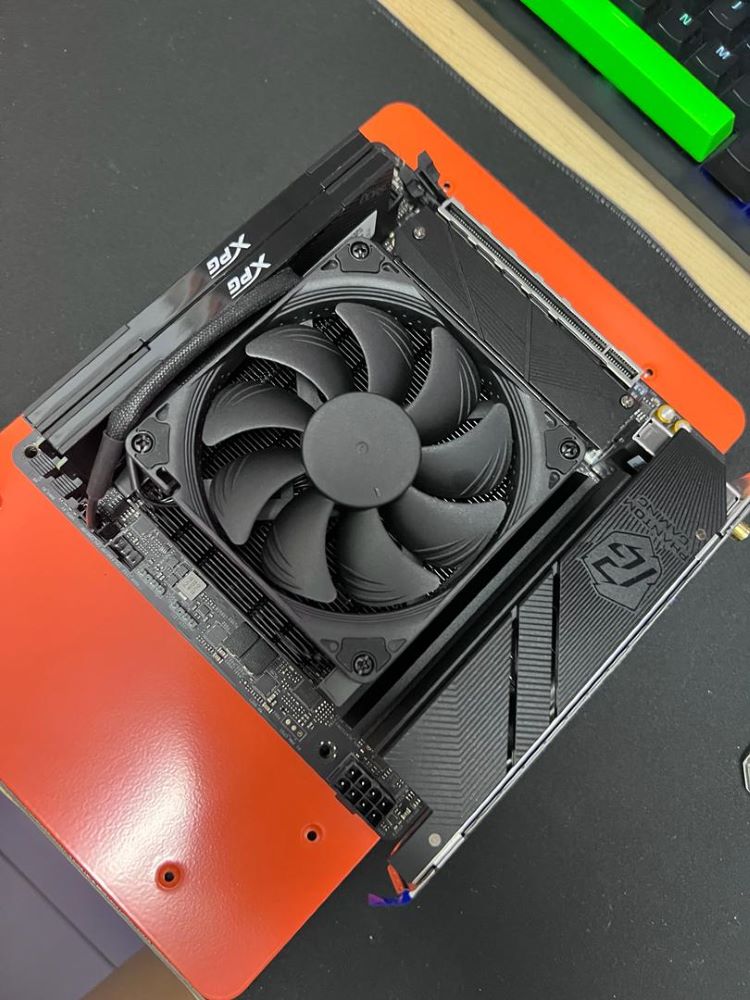
The Cooler
I was given a free AMD CPU cooler with the 7500F but I gave that the skip and went with the low profile Noctua NH-L9a-AM5 chromax.black. I found that while the chromax.black version looks really slick, the packaging and accessories seem to be a bit lacking versus the traditional beige/brown Noctua NH-L9i-17xx which I had used previously.
RAM was a pair of XPG Lancer 16 GB 5200 MHz DDR 5 RAM, bringing the total to 32 GB. Storage space was also another bit from XPG in the form of the 1 TB SX8200 Pro M.2 2280. Delivering the juice to the build is a 1stplayer 750 watt SFX Platinum PSU.
The Case
Putting everything together was an uneventful experience; this may be due to each piece of the Teenage Engineering Computer-1 case was already folded into form from the previous build. Made out of aluminum, the case comes in the colour of RAL 2004 Orange, and bears the hallmarks of a typical Teenage Engineering creation.
The machine managed to POST at first try. Unlike Project 2023, Project 2024 isn’t so much of a gaming build but more of a developer-oriented machine that I’ll be placing in the office. PC building itch has been scratched… momentarily.
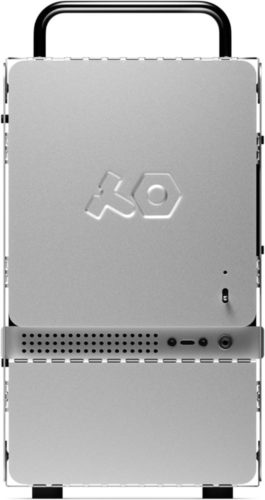
The Teenage Engineering Computer-1 case is available on Amazon, and now comes in new, slick-aluminum finish. Check them out over here:
- teenage engineering Computer-1 Mini-ITX PC Computer Case in Aluminum Finish – USD 149
- teenage engineering Computer-1 Mini-ITC PC Computer Case in Orange RAL 2004 Finish – USD 99
Final Specs
Here is a summary of Project 2024’s specifications:
- CPU: AMD Ryzen 5 7500F
- Motherboard: ASRock A620I Lighting WiFi
- CPU Cooler: Noctua NH-L9a-AM5 chromax.black
- RAM: 32GB XPG Lancer 5200 MHz DDR 5 RAM
- SSD: 1 TB XPG SX8200 Pro M.2 2280
- GPU: PNY GeForce RTX 3060 12GB XLR8 Single Fan GPU
- PSU: 1stplayer 650W SFX Platinum PSU
- Casing: teenage engineering Computer-1 in RAL 2004 Orange

